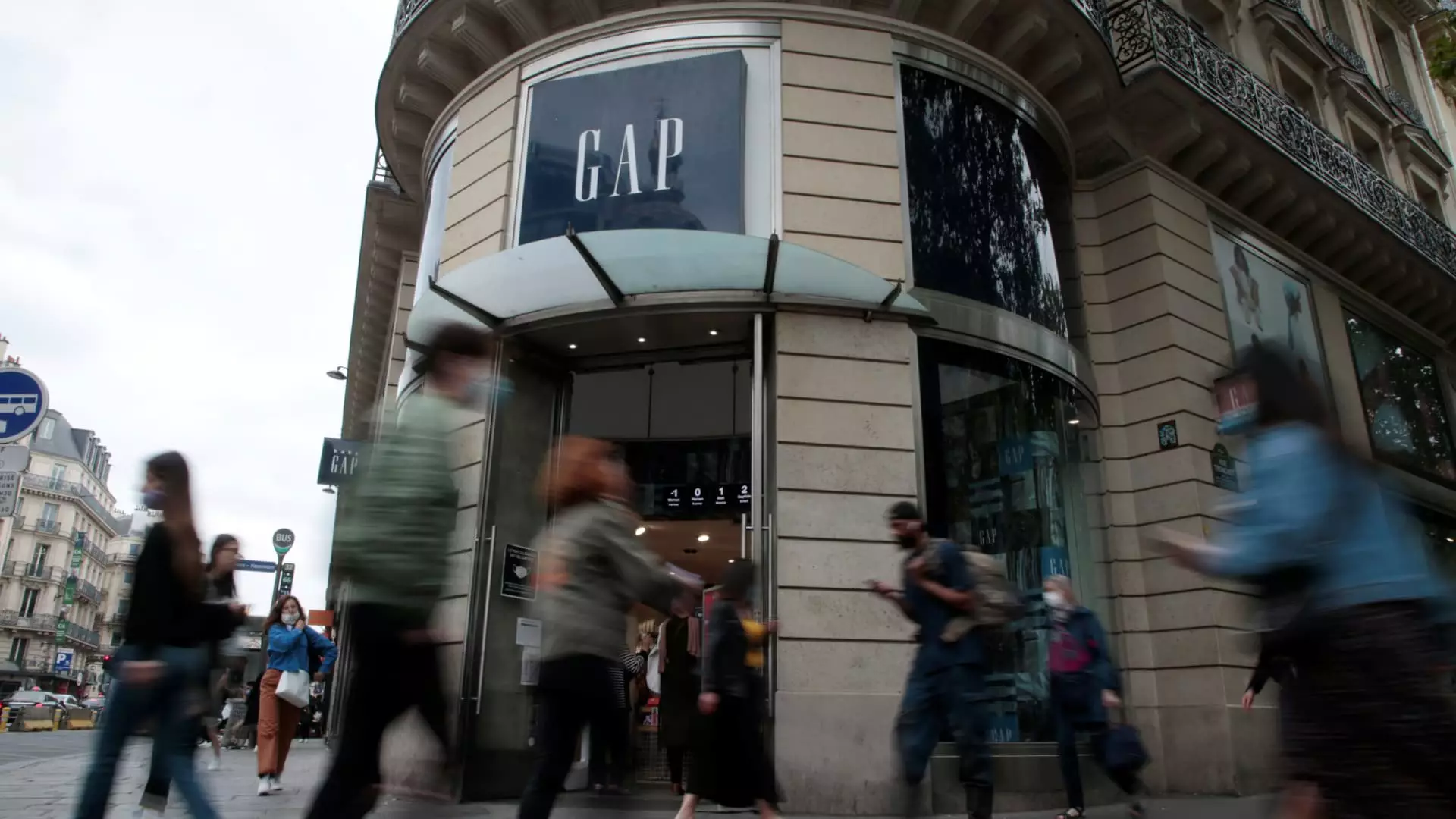When Gap Inc. announced potential losses of up to $150 million due to newly imposed tariffs, the ripple effects played out in real time on the stock market, with shares plummeting over 15% in after-hours trading. Beyond the immediate numbers, this reflects not just financial miscalculation but managerial inadequacy. The predicament of Gap is not merely a result of external pressures but a culmination of poor strategic planning in an increasingly competitive retail landscape. The company has been caught flat-footed, as evidenced by CEO Richard Dickson’s admission that tariffs could disproportionately affect their financial health. While Gap did announce efforts to mitigate projected tariff impacts, one must question the efficacy and timeliness of these responses: are they too little, too late?
Focus on Supply Chain Diversification: A Desperate Move?
Gap stated its intention to diversify its supply chain and reduce exposure to China. With approximately 70% of production previously reliant on other nations, the alarm bells regarding dependence on a single source should have been ringing long before now. The reality is that supply chain diversification should have been a proactive strategy rather than a reactive measure in response to tariff threats. Adding U.S. cotton to the supply mix may help, but it does not address the fundamental issue of over-reliance on specific logistical arrangements. The focus here should not merely be on diversification but on foresight and innovation in sourcing materials. The lack of a robust contingency plan suggests a leadership that is struggling to balance both immediate and long-term financial health.
Profits vs. Vision: An Incomplete Picture
Though Gap delivered first-quarter results that exceeded Wall Street’s expectations—hitting earnings per share of 51 cents compared to the anticipated 45 cents—the broader implications of such data are sobering. The company’s revenue growth of 2% may seem promising, yet it conceals a harsher reality of sluggish sales projections and a gross margin forecast that falters against expectations. This conflict raises significant questions: Is the company focusing too heavily on short-term profits while failing to communicate a compelling vision for sustainable growth?
Despite the optimistic rhetoric around brand strength—Dickson claims that “strong brands can win in any market”—one cannot help but feel that Gap is in a defensive position rather than an offensive one. There is a stark difference between surviving and thriving, and the former is not a robust indicator of future success.
Old Navy: The Lone Star of Achievement
Against this backdrop of uncertainty, Old Navy stands out as a beacon of success, posting $2 billion in sales, albeit with a mere 3% increase from the previous year. Its performance seems buoyed primarily by effective marketing campaigns that resonate with the young consumer demographic. However, how sustainable is this success? Old Navy may be a leader within Gap’s portfolio, but it’s essential to consider whether its accolades are a short-lived response to novelty rather than a long-term strategy. In an industry where consumer attention is fickle, relying on gimmicks may eventually backfire.
Brand Identity Crisis: The Struggles of Banana Republic and Athleta
The results for Banana Republic and Athleta illustrate the ongoing identity crisis facing multiple segments of Gap’s business. Banana Republic, despite a collaborative attempt with HBO’s The White Lotus, saw sales drop by 3%. This speaks volumes about consumer fatigue and loyalty erosion. Athleta’s considerable 6% decline in sales indicates that rebranding efforts may not be translating into real-world appeal.
Here lies a crucial insight: brands in the modern retail sector cannot afford to stagnate while chasing past trends. Gap’s attempts at revitalization are commendable, yet the execution raises concerns. The market rewards innovation and relevance, and if a brand alienates its core customer base through misguided product direction or unclear messaging, the repercussions can be catastrophic.
The Reckoning Ahead: A Call for Reform
Gap’s current situation demands urgent reform—an overhaul of strategies with a focus on forward-thinking initiatives, rather than reactive bandwidth. It prompts a broader discussion about the adaptability of legacy brands in an era dominated by rapid change and market volatility. There is great peril in complacency, particularly within the fluid landscape of consumer preferences and economic uncertainties.
Investors and consumers alike are crying out for transparency, foresight, and a revitalized commitment to building brands based on trust, innovation, and authenticity. How can Gap harness the lessons of this fiscal crisis to emerge not merely surviving but competing vigorously in an unforgiving marketplace? It will take vision, hard decision-making, and maybe a touch of boldness not previously seen from this legacy retailer. The next moves are crucial; failure to act decisively could lead to long-term financial instability and brand erosion that might cripple the organization altogether.

